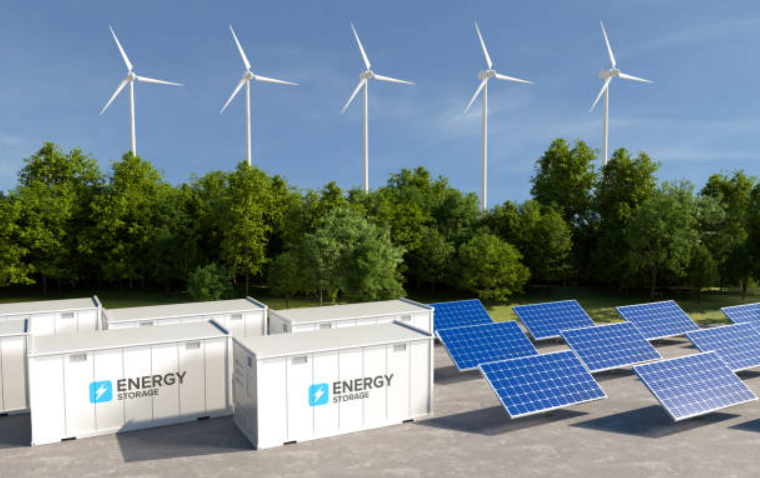Over the last couple of years, solar energy has rapidly emerged as a cornerstone in most global renewable energy strategies. As more households and businesses install solar panels, interest has surged in solar buyback programs that enable owners of solar panels to sell excess energy back to the grid, reducing their electricity costs and fostering sustainability. However, the integration of energy storage systems into solar buyback programs has redefined the potential of such schemes by offering much greater efficiency and flexibility. The following article looks at the role of energy storage in solar buyback programs, with data, examples, and expert insight for a holistic view.
Understanding Solar Buyback Programs
What Are Solar Buyback Programs?
Solar buyback programs, otherwise known as net metering or feed-in tariffs, enable individuals and organizations with solar panels to sell excess energy they produce during peak sunlight hours back to the electrical grid. In return, participants usually receive credits or cash compensation for the energy supplied. These credits can offset the cost of electricity when the solar panels are not producing any electricity.
Benefits of Solar Buyback Programs
- Cost Savings: Homeowners reduce electricity bills by selling excess energy.
- Environmental Impact: Encourages renewable energy adoption and reduces reliance on fossil fuels.
- Grid Stability: Excess energy helps balance electricity demand and supply.
These, however, face challenges like variable generation of solar power and wastage of energy in non-peak hours. And that is where these energy storage systems become very crucial.
The Role of Energy Storage in Solar Energy Systems
Energy storage systems, mainly in the form of batteries, store surplus solar energy for later use. With the integration of storage solutions, the owner of solar panels can optimize their participation in buyback programs and ensure a continuous supply of energy.
Advantages of Energy Storage in Solar Buyback Programs
1. Maximizing Energy Utilization
Without energy storage, excess solar energy is sent to the grid immediately, often during times of low demand. Storage systems allow homeowners to save energy for use during high-demand periods, such as evenings, maximizing financial returns from buyback programs.
2. Energy Independence
Stored energy can power homes during outages or when solar panels are not generating power, reducing reliance on the grid.
3. Enhanced Flexibility
Energy storage systems enable participants to time their energy exports strategically, capitalizing on periods of higher buyback rates offered by utilities.
Real-World Examples of Energy Storage Integration
Case Study: Residential Solar System in California
In California, where solar buyback programs are robust, a family installed a 10 kWh battery alongside their solar panels. During summer months, they:
- Generated 15 kWh/day of solar energy.
- Used 10 kWh/day for household needs.
- Stored 5 kWh/day in their battery.
By discharging the stored energy during peak evening hours, they earned higher compensation rates under their utility’s time-of-use (TOU) pricing structure.
Commercial Application: Australian Business
An Australian retail business with a 100 kW solar system and 50 kWh of battery storage:
- Exported excess energy during peak pricing periods.
- Reduced grid reliance by 40%.
- Saved over $15,000 annually through a combination of energy savings and buyback credits.
Data Insights on Energy Storage and Solar Buyback Programs
The following table highlights the financial benefits of integrating energy storage systems:
The integration of storage increased monthly savings by 75% in this example.
Expert Opinions
Insight from Solar Industry Experts
“Energy storage is a game-changer for solar buyback programs. It not only enhances user autonomy but also stabilizes the grid by smoothing out supply fluctuations,” says Dr. Jane Smith, a renewable energy consultant.
Social Media Thought Leaders
A popular tweet from @SolarFuture reads: “Adding batteries to your solar system is like having a savings account for energy. Maximize your ROI with smarter energy storage solutions! #RenewableEnergy”
Challenges of Energy Storage in Solar Buyback Programs
Despite its advantages, energy storage has some hurdles:
- High Initial Costs: Installing batteries can be expensive. For instance, a Tesla Powerwall costs approximately $10,000, including installation.
- Battery Lifespan: Most batteries last 10-15 years, requiring eventual replacement.
- Regulatory Barriers: Policies governing buyback rates and storage incentives vary widely.
Future of Energy Storage in Solar Buyback Programs
Technological Advancements
Emerging technologies, such as solid-state batteries, promise higher energy densities and longer lifespans. Additionally, advancements in AI and IoT can optimize energy usage patterns, enhancing storage efficiency.
Policy Support
Governments and utilities are increasingly recognizing the importance of energy storage. Subsidies and incentives for battery installations are being introduced globally to encourage adoption.
Grid Modernization
Smart grids equipped with advanced metering infrastructure (AMI) can better integrate distributed energy resources, including storage systems, into solar buyback programs.
FAQs
What is a solar buyback program?
A solar buyback program allows solar panel owners to sell surplus energy back to the grid, typically earning credits or monetary compensation.
Why is energy storage important for solar buyback programs?
Energy storage maximizes the benefits of solar buyback programs by storing surplus energy for later use, enabling strategic energy exports during peak pricing periods, and reducing grid dependence.
How much does an energy storage system cost?
Energy storage systems vary in cost. For example, a Tesla Powerwall costs approximately $10,000, including installation.
Are there incentives for installing energy storage systems?
Yes, many governments and utilities offer incentives, such as tax credits and rebates, to promote energy storage adoption. Check local programs for specific details.
What is the lifespan of a solar battery?
Most solar batteries have a lifespan of 10-15 years, after which they may require replacement.
Resources
- SolarBuyback.com – Explore tailored solutions for solar buyback and energy storage systems.
- EnergySage – A comprehensive resource for understanding solar energy and battery storage.
- Department of Energy – Learn about renewable energy initiatives and incentives.
Conclusion
The role of energy storage in solar buyback programs cannot be overstated. By enabling efficient energy management, reducing grid dependence, and maximizing financial returns, storage systems unlock the full potential of solar energy investments. As technologies evolve and policy frameworks adapt, energy storage will undoubtedly become a standard feature of solar setups, paving the way for a more sustainable and resilient energy future.
To learn more about optimizing your solar energy system and participating in solar buyback programs, visit SolarBuyback.com.


